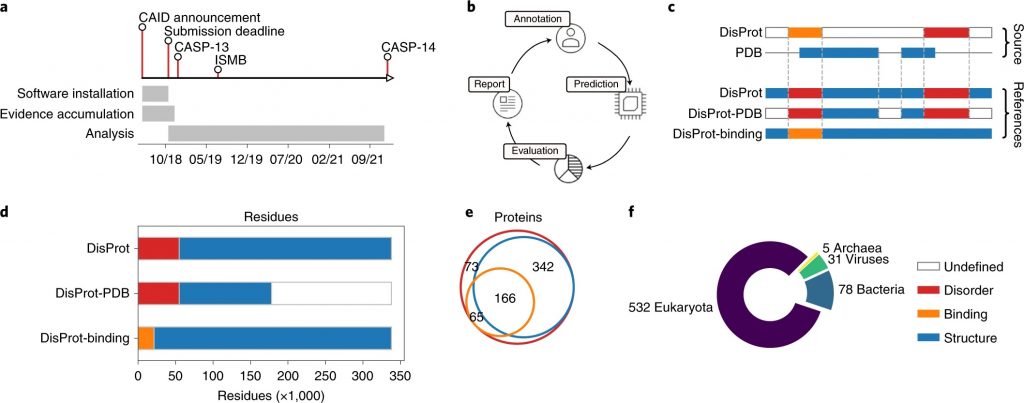Nature Methods volume 18, pages 472–481 (2021)
https://doi.org/10.1038/s41592-021-01117-3

Abstract
Intrinsically disordered proteins, defying the traditional protein structure–function paradigm, are a challenge to study experimentally. Because a large part of our knowledge rests on computational predictions, it is crucial that their accuracy is high. The Critical Assessment of protein Intrinsic Disorder prediction (CAID) experiment was established as a community-based blind test to determine the state of the art in prediction of intrinsically disordered regions and the subset of residues involved in binding. A total of 43 methods were evaluated on a dataset of 646 proteins from DisProt. The best methods use deep learning techniques and notably outperform physicochemical methods. The top disorder predictor has Fmax = 0.483 on the full dataset and Fmax = 0.792 following filtering out of bona fide structured regions. Disordered binding regions remain hard to predict, with Fmax = 0.231. Interestingly, computing times among methods can vary by up to four orders of magnitude.
